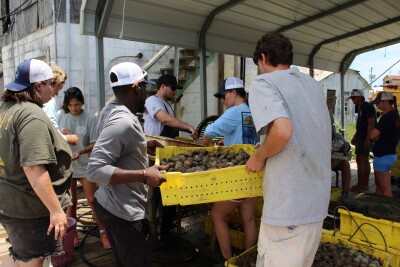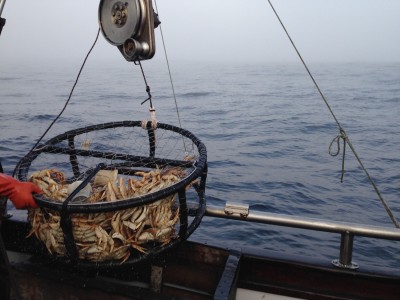If you want to work in Mark MacLachlan’s lab, it helps to have a taste for seafood. The chemist, who works at the University of British Columbia in Vancouver, is working on turning the discarded shells of shrimp, crabs, and lobsters into advanced materials that could be used in batteries, plastics, or even for growing new organs. And it is up to his students to provide a steady supply of carcasses.
“One of my students buys lobsters and crabs, eats them, and then brings the shells to work,” MacLachlan says. Another has managed to secure a free supply of shells from a seafood restaurant.
MacLachlan is after one particular component of the material that makes up the shells—chitin, a tough substance that is structurally similar to the cellulose in plant cell walls. The chitin is made of rod-shaped nanocrystals that are organized in a helix. Their orientation reflects light in a way that makes the shells iridescent.
From this starting point, MacLachlan has figured out how to transform chitin into a number of useful materials, such as an iridescent film that changes color when pressure is applied, and a litmus paper-like film that detects different chemicals in water.






